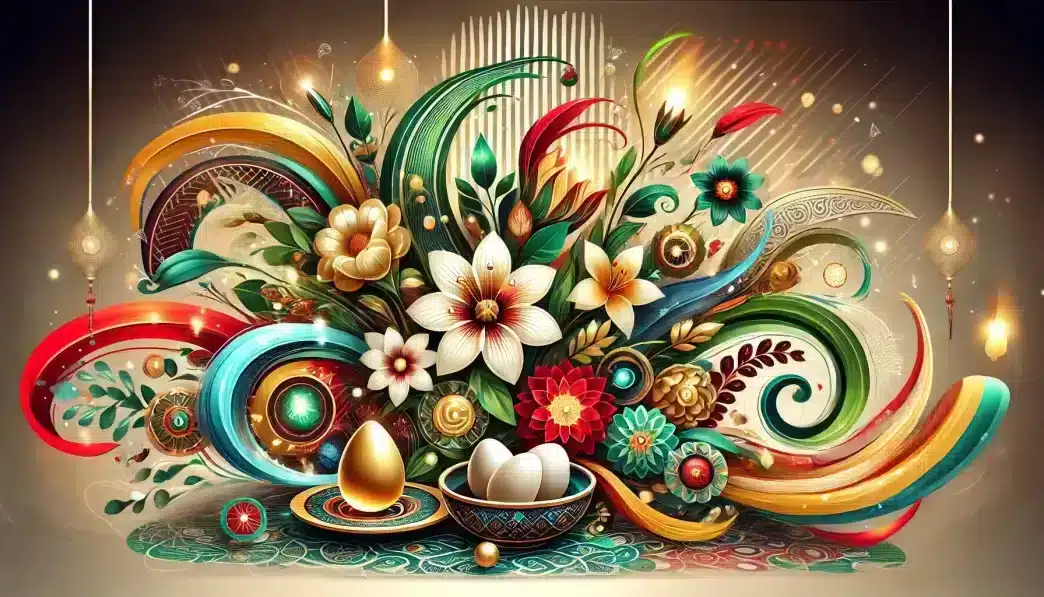What is Nowruz?
Nowruz, also known as Nawroz, Norooz, or Nauryz, is celebrated annually on or around March 20-21 to mark the beginning of the Persian New Year and the arrival of spring. Translating to “new day” in Persian, this ancient festival has been observed for over 3,000 years and is rooted in Zoroastrian traditions. It symbolizes renewal, rebirth, and the triumph of light over darkness, aligning with the Spring Equinox, when day and night are nearly equal in length.
The exact date and time of Nowruz can vary due to the astronomical determination of the equinox. It usually falls on March 20th or 21st, but occasionally on March 19th or 22nd, depending on the specific timing of the equinox and the geographical location.
- 2025: Thursday, March 20
- 2026: Saturday, March 21
- 2027: Saturday, March 20
- 2028: Monday, March 20
- 2029: Tuesday, March 20
History and Origin
The origins of Nowruz date back to ancient Persia, where it was closely tied to Zoroastrianism, one of the world’s oldest religions. The festival marked the start of the agricultural year, symbolizing the renewal of nature. Over time, it transcended religious boundaries, becoming a cultural celebration observed by people of various faiths and ethnicities.
The day aligns with the Spring Equinox, a time associated with balance, renewal, and fertility. The first written records of Nowruz appear in Achaemenid inscriptions around 500 BCE, and it has been celebrated continuously since. Today, Nowruz is recognized as a national or cultural holiday in over 10 countries, including Iran, Afghanistan, Kurdistan, Tajikistan, and Kazakhstan, among others.
Who Celebrates Nowruz?
- Persian Communities: Iran, Afghanistan, and Tajikistan observe Nowruz as a national holiday, deeply rooted in their cultural and historical identities.
- Kurdish Communities: Nowruz symbolizes freedom and resilience for Kurdish people and is widely celebrated in Iraq, Turkey, and Syria.
- Central Asian Countries: Nations like Uzbekistan, Kazakhstan, and Kyrgyzstan embrace Nowruz as part of their heritage and a sign of spring renewal.
- Diaspora Communities: Persian and Central Asian communities worldwide honor Nowruz, maintaining their traditions far from home.
- UNESCO Observers: Nowruz is recognized globally as a celebration of cultural diversity and unity.
Slogans and Themes
Nowruz embodies themes of renewal, peace, and togetherness. It symbolizes the start of a fresh cycle, both in nature and life. Families come together to honor their heritage, clean their homes, and prepare for a prosperous year ahead.
Messages associated with Nowruz often focus on “Rebirth and Renewal,” “Unity Through Tradition,” and “Celebrating Life and Light.” These themes highlight its universal appeal and timeless significance, resonating across generations and cultures.
Colors, Symbols, and Patterns
Colors
- Green: Represents growth, renewal, and nature.
- Gold: Symbolizes prosperity and wealth.
- White: Reflects purity, peace, and a fresh start.
Symbols
- Haft-Seen Table: A traditional arrangement of seven symbolic items beginning with the letter “S” in Persian, such as sabzeh (sprouts for renewal) and sir (garlic for health).
- Fire: Represents purification and the triumph of light over darkness.
- Eggs: Symbolize fertility and new life.
Patterns
- Geometric Designs: Common in Persian art and decoration, symbolizing harmony and balance.
- Floral Motifs: Reflect spring and the blossoming of nature.
- Abstract Curves: Evoke movement and renewal, echoing the flow of life.
How to Celebrate Nowruz
- Prepare a Haft-Seen Table: Arrange seven symbolic items like sabzeh (sprouts), samanu (sweet pudding), and serkeh (vinegar) to welcome the new year.
- Clean Your Home: Participate in “spring cleaning” to create a fresh environment for the year ahead.
- Light Bonfires: Join others in jumping over fires during Chaharshanbe Suri, a pre-Nowruz ritual symbolizing purification.
- Cook Festive Meals: Enjoy traditional dishes like sabzi polo ba mahi (herbed rice with fish) and ash-e reshteh (noodle soup).
- Spend Time with Loved Ones: Visit family and friends, exchange gifts, and spread goodwill.
Most Used Hashtags
- #Nowruz
- #Norooz
- #HappyNowruz
- #SpringEquinox
- #PersianNewYear
Why is Nowruz Important?
Nowruz is a celebration of renewal, unity, and cultural heritage. It serves as a reminder of the enduring connection between humanity and nature, offering an opportunity to embrace change, set intentions, and celebrate life. By fostering togetherness and peace, Nowruz transcends borders and unites people from diverse backgrounds.
Recognized globally, Nowruz honors traditions that have been passed down for millennia, enriching the cultural tapestry of humanity and promoting values of hope, respect, and community.
Features
March: Nowruz (Persian New Year)
Why do you keep falling for the same type?
Read the article Lovemaps: the hidden blueprint of our love.

